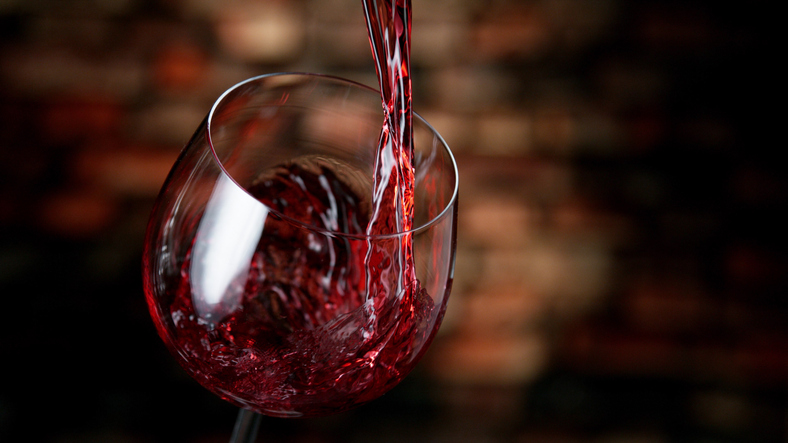What are Sulfites in Wine?
The term Sulfite is used to describe a chemical compound called sulfur dioxide (SO2). This compound is common and occurs naturally not only in grapes, but also in foods like coconuts and pork.
Today, additional amounts of sulfur dioxide (measured in parts-per-million or ppm) are commonly added to popular food items as both a preserving and antimicrobial agent.1 Foods that may contain added sulfites range from your favorite wine to the maple syrup on your waffles.
RELATED: Learn About the Potential Benefits of Drinking Red Wine in Moderation
Evidence of sulfite use in early winemaking has been found during excavations around ancient Rome. Indicating that the Romans discovered its fumigating and antioxidant properties by burning candles around their wine barrels.
Why Sulfites are Used in Wine
Wine makers will commonly add extra sulfur dioxide to some wines at the beginning of fermentation in order to increase the longevity of the juice.
In short, sulfites are used as a preserving agent and have antioxidant, anti-browning and antimicrobial properties. All of this helps to prevent a wine from turning into vinegar.
How much sulfur dioxide goes into a wine?
The quantity of SO2 present in wine can vary widely. It often depends on the kind grape varietals being used and what qualities a wine maker is looking to achieve with their product. For example, some wines with high acidity may require less sulfur dioxide, as the acid already aids in preservation.
- Organic or “Sulfite Free Wines,” will have sulfite levels under 100ppm. That’s right, no wine is completely sulfite free.
- In the United States, sulfite levels in wine are supposed to be kept at 350ppm or less.
SULFITES AND HEADACHES? Sulfites in general have gotten a bad rap over the past few decades. In reality, they are not the cause of headaches as rumored to be from drinking red wine.
There has been no conclusive evidence that links headaches to drinking wine containing sulfites. In fact, wine makers often add more sulfites to their white wines, as most whites don’t age as well as reds naturally.
RELATED: The Definition of Tannins in Wine: Why They Matter
Sulfur Dioxide Allergies
Some individuals may be allergic to sulfites. These potential allergic reactions can manifest themselves in the form of wheezing, couching, hay fever or hives. While these reactions are relatively rare, individuals with underlying asthma symptoms should be wary of ingesting foods containing sulfur dioxide.
The FDA requires foods that contain a sulfite level of 10ppm or more to say so on the label.2 Few, if any significant allergic reactions have been observed on individuals after ingesting this amount. Foods that contain high sulfur dioxide levels (100ppm+) should be avoided by those with sulfur allergies.

Should I be Concerned About Sulfites in Wine?
If you have known food allergies, or find yourself overly sensitive to certain foods that contain preservatives (like many processed foods or packaged meats), you might do yourself a favor to limit your intake. The same goes for those who may be asthmatic.
RELATED: What Does “Astringency” Mean as it Relates to Wine?
At the end of the day, just listen to what your body is telling you. Don’t use a headache as an indicator to being overly sensitive to sulfur. The reality is you probably just had too much wine, too much cheese and didn’t drink enough water. The quantity of sulfites in most wine is relatively small and typically will not affect most wine drinkers.
More Frequently Asked Questions about Sulfites in Wine
- “Sulfites in Foods: Uses, Analytical Methods, Residues, Fate, Exposure Assessment, Metabolism, Toxicity, and Hypersensitivity.” ScienceDirect, Academic Press, 12 May 2008. Link
- “CFR – Code of Federal Regulations Title 21.” Accessdata.fda.gov, www.accessdata.fda.gov/scripts/cdrh/cfdocs/cfcfr/CFRSearch.cfm?fr=130.9.Link

If talking on a 5G phone have an effect on Sulfites? If you are drinking a glass of wine while talking on a 5G phone ?
My late husband & I tried wine. Within 10 minutes or so my left arm started going number, I had chest pain and a few other symptoms. He took me to the hospital. They said that I was having a heart. But after 5 days in the hospital they couldn’t figure out the problem. At this time I didn’t know wine had sulfides. Two more times w/in a few months the same thing happened. Finally, one doctor asked me why I would drink wine when I’m allergic to sulfa. I said that I didn’t realize wine had sulfides.
So my question is: ” Do the sulfides bake out should I want to add wine? Or what can I replace wine with when a recipe calls for wine?”[
Hi Virginia,
Sulfites are compounds that naturally occur in wine and can also be added as preservatives. While most people can consume sulfites without any adverse effects, a small percentage of the population, especially those with asthma or sulfite sensitivities, may experience allergic reactions similar to the symptoms you described (American College of Allergy, Asthma & Immunology).
Regarding your question about cooking with wine, scientific studies indicate that sulfites’ concentration can significantly decrease when wine is subjected to high temperatures, such as during boiling or baking. For instance, research published in the Journal of Agricultural and Food Chemistry shows that sulfites can diminish to varying degrees depending on cooking duration and method. However, for individuals with severe sensitivities, even small amounts can potentially trigger reactions, suggesting that it might not be entirely safe to rely on cooking to eliminate sulfites completely.
As for alternatives, there are several options you can use to replace wine in recipes, aiming to mimic its acidity, sweetness, or depth without introducing sulfites:
Broth or Stock: Vegetable, chicken, or beef broth can serve as a base, with a splash of lemon juice or vinegar for added acidity.
Grape Juice: White or red grape juice can replace wine for sweetness and fruitiness, with a bit of vinegar to balance the flavor.
Non-Alcoholic Wine: Some non-alcoholic wines may contain lower levels of sulfites than regular wines, but it’s important to read labels carefully.
Vinegars: A variety of vinegars can provide the acidity and complexity that wine would contribute to dishes.